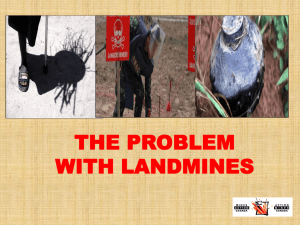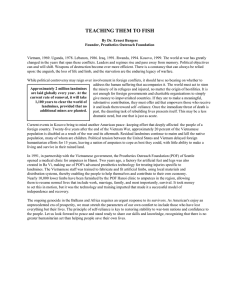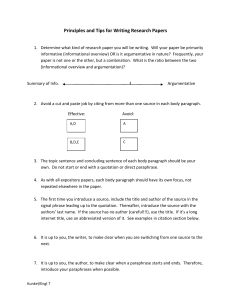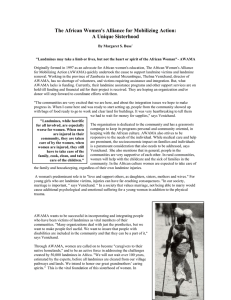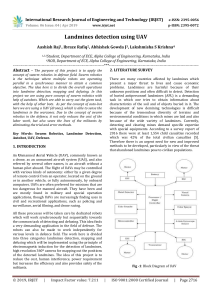One Step at a Time Teachers Notes
advertisement
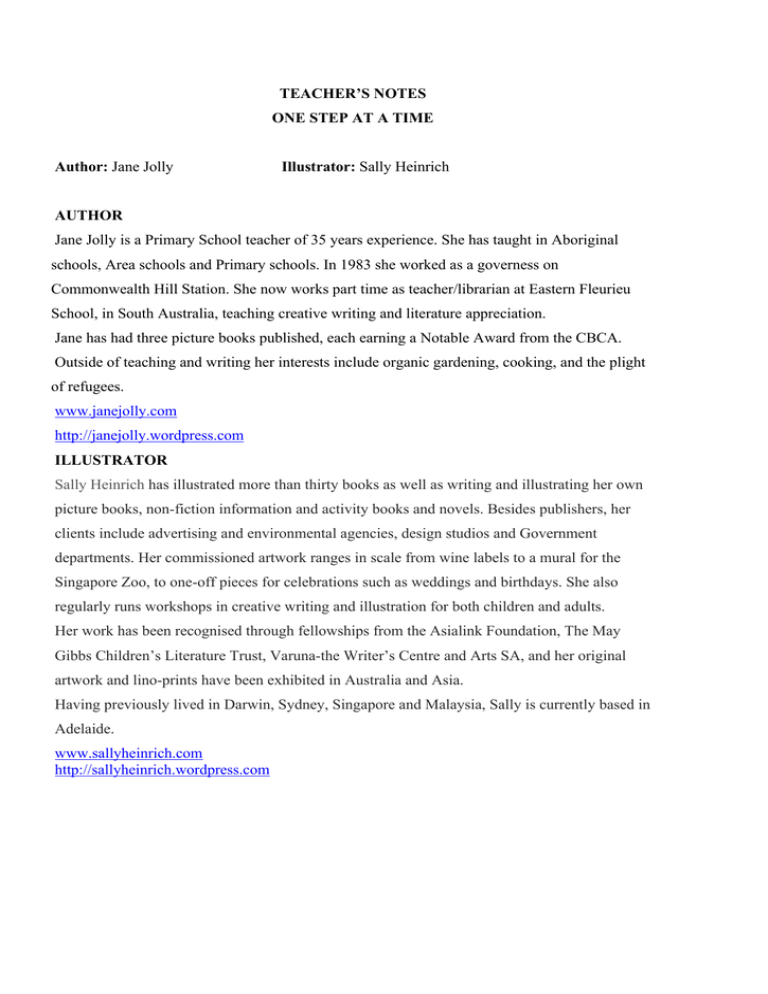
TEACHER’S NOTES ONE STEP AT A TIME Author: Jane Jolly Illustrator: Sally Heinrich AUTHOR Jane Jolly is a Primary School teacher of 35 years experience. She has taught in Aboriginal schools, Area schools and Primary schools. In 1983 she worked as a governess on Commonwealth Hill Station. She now works part time as teacher/librarian at Eastern Fleurieu School, in South Australia, teaching creative writing and literature appreciation. Jane has had three picture books published, each earning a Notable Award from the CBCA. Outside of teaching and writing her interests include organic gardening, cooking, and the plight of refugees. www.janejolly.com http://janejolly.wordpress.com ILLUSTRATOR Sally Heinrich has illustrated more than thirty books as well as writing and illustrating her own picture books, non-fiction information and activity books and novels. Besides publishers, her clients include advertising and environmental agencies, design studios and Government departments. Her commissioned artwork ranges in scale from wine labels to a mural for the Singapore Zoo, to one-off pieces for celebrations such as weddings and birthdays. She also regularly runs workshops in creative writing and illustration for both children and adults. Her work has been recognised through fellowships from the Asialink Foundation, The May Gibbs Children’s Literature Trust, Varuna-the Writer’s Centre and Arts SA, and her original artwork and lino-prints have been exhibited in Australia and Asia. Having previously lived in Darwin, Sydney, Singapore and Malaysia, Sally is currently based in Adelaide. www.sallyheinrich.com http://sallyheinrich.wordpress.com BOOK TRAILER Look at the Crowdfunding trailer for the book at: http://vimeo.com/90741390 ENVIRONMENT/GEOGRAPHY The story is set in the mountainous rainforests of Asia. It could be any of the countries of Laos, Thailand, Burma, Cambodia, Vietnam or the Philippines where landmines have been left after bombing campaigns. Activities: 1. Find a map of Asia and colour the countries known to still have landmines left behind. 2. What is the work that the elephants are doing in the forest? Why are elephants used and not machinery? 3. Are there other products from the forests, which are harvested or collected by the local people? Are they exported or only for local use? 4. Who buys the rainforest wood? Is this forestry sustainable? 5. Choose one country and research the indigenous peoples of that country, their culture and lifestyle, and how life has changed for them in the 21st Century. HISTORY 1. Choose one country in the region and research, which wars it has been involved in. 2. Were landmines used during the war? If so by whom? And why? 3. What is the ongoing legacy of the wars to both children and adults? ELEPHANTS Go to this site to view a short film on Asian elephants. http://animals.nationalgeographic.com.au/animals/mammals/asian-elephant/ 1. What are some of the threats that Asian elephants face in the 21st century? Go to this site to view the webpage of Elephant Family an organisation, which is helping the endangered Asian elephant. http://www.elephantfamily.org/ 2. What are some actions you could take to help save the Asian elephant? LANDMINES Read some facts about landmines at: http://lukandmali.wordpress.com 1. Research the names of organisations world-wide which are helping to rid the world of landmines and prevent further mines being used. 2. Explore the website of the International Campaign to Ban Landmines at: http://www.icbl.org/en-gb/home.aspx 3. Explore the website of SafeGround at:http://australia.icbl.org/safe%20ground.htm 4. Landmines haven’t just been used in Asia. Find out where in the world they have been used as part of warfare. 5. List as many reasons that you can to show the devastating affect, that landmines can have on a community. 6. Find out the names of the countries in the world, which have signed the Landmine Treaty. 7. Can you think of any reasons why a country would not sign the treaty? 8. Read about the impact of landmines on children at: http://www.unicef.org/sowc96/9ldmines.htm 9. What is a prosthetic? 10. Research the manufacture and costs of prosthetics. 11. Have you heard of any other animals being fitted with prosthetics? 12. Why do you think the author used the elephant to show the story of landmines instead of a child? 13. Look at the trailer for the film The Eyes Of Thailand. It is a film about a woman who dedicated ten years of her life to help elephant victims of landmines: http://www.eyesofthailand.com/ 14. Design a poster to warn populations of landmines. 15. Design a poster to encourage the banning of landmines. 16. Read the biography of Nobel Peace Prize winning photographer and anti landmine campaigner, John Rodsted at: http://www.stopclusterbombs.org.nz/wpcontent/uploads/2007/09/cmcnz_biorodsted_27sep 07.pdf BUDDHISM 1. What have you learnt about Buddhism from the story? 2. What was the origin of Buddhism? 3. Do you know where your local Buddhist temple is? 4. Go to this website to get a very simple and quick understanding of Buddhism: 5. http://www.buddhanet.net/e-learning/5minbud.htm 6. In what countries do Buddhists live? 7. What 5 rules do you think you could live by? 8. What are the other most popular religions in Asia? 9. How do the belief systems of these religions compare with Buddhism? LANGUAGE OF THE STORY 1. How does Jane Jolly set the scene at the beginning of the story? 2. What senses has she used throughout the story? Using your five senses what other words could be used to describe the settings in the story? 3. What is a simile? Similes make the biggest impact when they are not clichés. “As white as a ghost” is a cliché. Try writing some similes, which are original and not clichés. 4. What were the clues in the text that Luk was also a landmine victim? 5. How many “colour” words can you find in the text? Imagine the text without those words? ILLUSTRATIONS Sally Heinrich’s illustrations have been done using lino prints. She begins by sketching the designs for each page on paper, usually doing many drafts before she’s satisfied. Then each drawing is transferred, in mirror image, to a block of lino. Then all the areas around the lines, that is, all the white spaces, are carved away. Ink is rolled onto the block, paper laid over the top, and it’s run through a printing press. They are then coloured using watercolour inks. The finished print is then scanned, to be reproduced in the book. You can see pictures of the different steps at <http://lukandmali.wordpress.com/one-step-at-atime-a-work-in-progress/> A feature of all of Sally’s work is the intricate borders she uses, which give more detail to the illustrations and story. The patterns used in the borders are based in part on traditional designs, and incorporate Buddhist symbols. For “One Step at a Time” she began with a storyboard. 1. What is a storyboard? Why are they useful? 2. Design your own storyboard for a story you have written or one you have heard. 3. Think about close ups, distance illustrations and middle distance. Match the text with the illustration. 4. Lino prints need to be drawn in reverse of what the finished illustration needs to look like. What would Sally have had to be very particular about with Mali? 5. Try some simple prints using a potato cut in half. Cut away the potato bits, which won’t be part of the design. Dip in paint and print your design. You can make it into wrapping paper or notepaper. 6. Do you know any other artists who use lino prints in their work? 7. Would the book have worked as well if she had used a different style? What other styles may have worked? 8. Research A lot of research was involved to get the images correct. Because the subject is real it is important to get the illustrations as close to reality as possible. Sally Heinrich has lived, worked and travelled throughout Asia for many years. She worked from photographic images of elephants and of the environment, and reference material that she gathered during visits to Cambodia and Laos, although she has tried to make them non-­‐specific to those countries so that the story can be read as set anywhere across that region. Make a list of what Sally may have researched to get the illustrations true. BOOK PUBLISHING There are many different jobs involved in publishing a book apart from the author and illustrator. Find out what these people do: 1. Editor 2. Designer 3. Publisher 4. Distributor 5. Literary agent 6. Printer 7. Bookseller Follow the book’s progress from initial story idea to publishing at: http://lukandmali.wordpress.com
